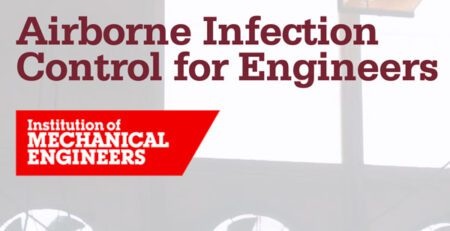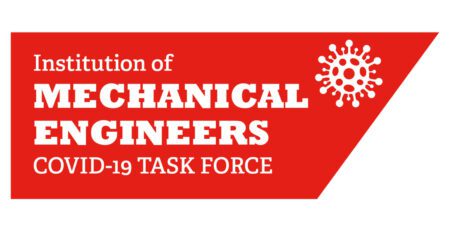How 2400 years of forgotten ‘miasma’ history can help us against the evolving COVID-19 pandemic.
In Ancient Greece over 2400 years ago, Hippocrates who is credited as being the Father of Medicine (The Hippocratic Oath taken by doctors), first proposed the concept of Miasma when he explained that the air that is inhaled is what is most common to people, so that is how a disease can attack many people at once.
Definition of “miasma” developed over the centuries as:
- a foul or polluted vaporous exhalation believed to cause disease.
- a heavy vaporous emanation or atmosphere, or bad air.
However, as miasma became the dominant theory of disease transmission, other theories were rejected, including for too many years’, John Snow’s accurate argument that cholera is spread through dirty water. But all through the 19th Century there was not just cholera, there were still the prevalence of deadly miasma related epidemics such as Consumption (pneumonia), Russian Flu, Whooping Cough and Tuberculosis, to name but a few.
Snow’s alternative explanations were found to be true and accepted in the 1860s and 1870s, and unfortunately, many medical professionals of the era disengaged from miasma theory. It wasn’t long before “bad-air theory” was forgotten, despite the enormity of the Spanish Flu Pandemic in 1918 which is believed to have taken 50 million lives.
The tragedy is that modern medicine during and since the 20th century became resistant to the idea of airborne spread of respiratory infections. A paper on this topic has found that this rejection of miasma theory initially led medical professionals to refute the idea that Covid-19 is airborne. This initial positioning created devastating consequences because the wearing of masks and mitigations for adequate ventilation were and continue to be delayed.
It is important that the relevant institutions, scientists, and medical advisors to policymakers around the world have now come to realise that Covid-19 is principally, an airborne respiratory illness. If we wish to mitigate the risks from a harmful miasma from an infected person’s contaminated exhaled breath, whether transmitted mainly or partially through the air, then indoor air quality should be prioritised to prevent the viral-load building -up indoors to enable occupants to breathe safely
Finally, in the Spring of 2021, the World Health Organisation (WHO) and the US Centers for Disease and Control (CDC) recognised the insignificance of surface transmission routes (1:10,000 chance of getting infected) and escalated the importance of Covid-19’s airborne transmission route. However, regulations and guidance by many policymakers around the world are still lagging, focusing on social distancing and underestimating the importance of adequate ventilation to protect us from Covid but also all those other re-emerging Victorian miasmatic diseases, now that the populations have so little immunity to these old pathogens either.
The idea of maintaining physical distance to prevent the spread of disease was first theorised by Carl Flügge in the late 1800s and then, the great American Engineer & Scientist William F Wells in the 1930’s with his analysis of the human exhaled particles (droplets) in terms of size and distribution. In 1940s, high-speed photography showed how sneezes generally spread to a maximum distance of 3 to 6 feet, before dropping to the ground. However, the importance of the tiny aerosol micro-droplets which can travel through the air, are not accounted for in the 90-year-old, six-foot (2metre) rule, meaning that the most important transmission route is under-estimated.
Many are still arguing about these theories too rather than the broader environmental considerations that come with a miasma. Considering this, an excellent new traffic light system tool has been created by researchers to highlight the importance of ventilation in risk assessment. This illustrates how the 2-metre rule oversimplifies risk mitigation. For example, a recent Cambridge University study confirmed that within a crowded, poorly ventilated space with people singing, even a distance of 20 to 30 feet may not be enough to protect people from infection.
For high-risk environments, we should now use the hospitals in Singapore and Hong Kong as a guide for adequate ventilation practice. These hospitals upgraded their ventilation systems in infectious disease wards after learning lessons from the 2003 SARS outbreak. In the UK, major investment must be made in hospitals to reduce airborne pathogen transmission. We need to consider all those from fungal spores to RSV and everything in between, including Covid.
The Health and Safety Executive (HSE) also advocate for the importance of adequate ventilation. If adequate ventilation cannot be maintained, which is usually the case in crowded indoor spaces, the HSE recommend the use of High-Efficiency (HEPA) Filters and Ultraviolet Devices, to reduce the airborne transmission of contaminated aerosols (miasma).
Whilst Chadwick lost the argument to Snow on cholera, his creation of the Public Health Act of 1848 and the new Public Health Engineering profession that was born, is the legacy for the world to benefit from enormously. The tragedy is, following his and the Father of Medicine’s belief in the miasma bad-air theory during Covid-19, would have served society extremely well against this deadly, evolving pandemic and not at least, nations around the world would have not wasted 18 months on “hygiene theatre”, disinfecting door handles and more lives protected.
It’s not too late to act. It’s critical to create safer air to breathe to protect better. We at PPL-Biosafety offer Consultancy services to advise Clients on matters of risk mitigation, ventilation system improvements, independent expert opinion, we can design and specify all the necessary and appropriate interventions to suit your occupational risks, your environment, and your operations.
Meticulously assessed and vetted by our expert multi-disciplinary team and global scientific network, PPL-Biosafety also are able to supply products that are appropriate for a client’s given end-use from our portfolio of British and European medical-grade quality air purification solutions. Our products optimal: safe-tried, tested, proven, and selected to re-create a safer, more confident normal to your specific occupational environment. We can select from a range of high-quality infection mitigation air-cleaning devices, as well as UV in-duct air disinfection solutions for within mechanical ventilation systems.
Our mission is to eradicate infectious miasmas by decontaminating indoor spaces. This means the air people breathe is safer, organisations and critical supply-chain are better protected from disruption, and we create pandemic resilience, to ready you for whatever the future may bring.






Leave a Reply